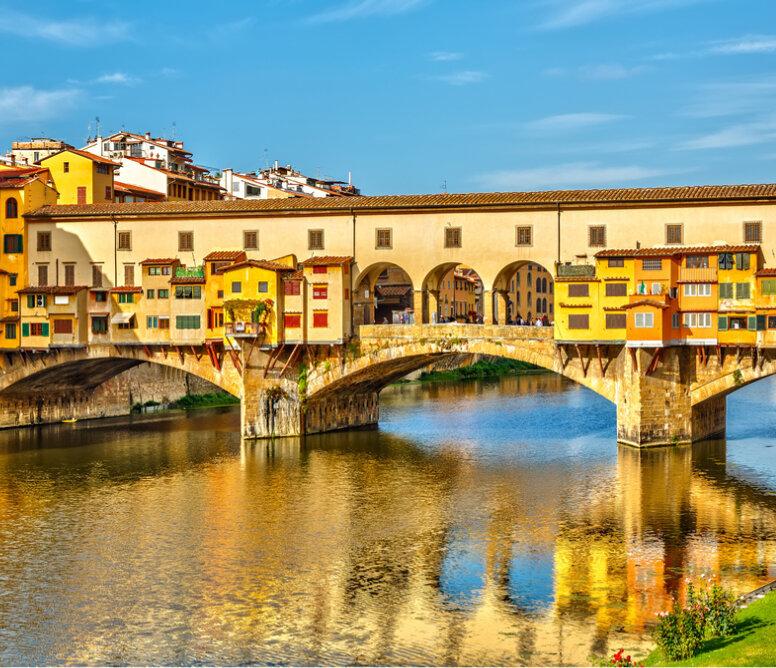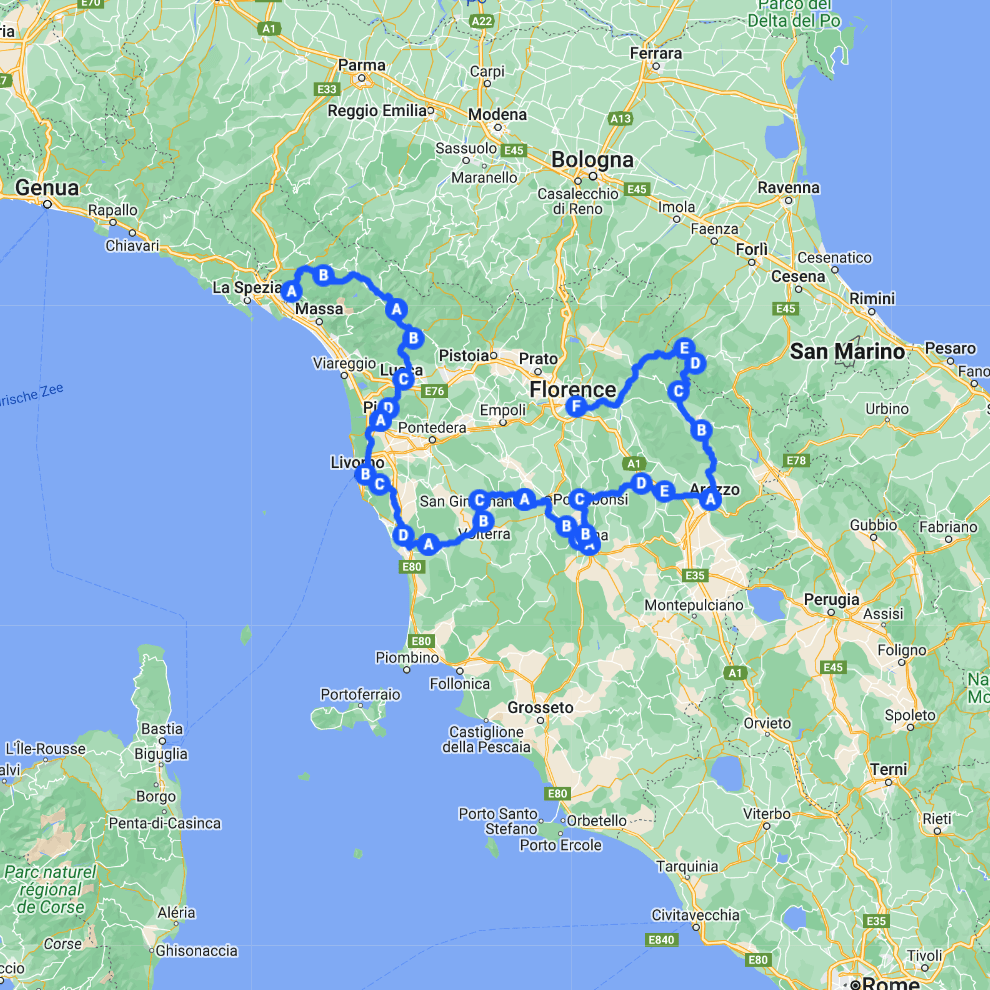Tuscany
La bella Italia, a beautiful country for a road trip, especially through the Tuscany region. This route takes you along breathtaking views, vineyards, medieval towns, delicious food, cappuccinos, romantic little streets and lots of churches, museums and palaces. The campervan route starts in the lesser-known Fosdinovo in Massa e Carrara and takes you along beautiful roads through the Tuscan countryside and national parks to various towns and villages in the area, before ending in Florence.
Total distance of the route: 564 km
Starting in Fosdinovo
We start our road trip in the Massa e Carrara region. The region has only been part of Tuscany since 1881 and therefore does not have a typically Tuscan feel. The vineyards, olive trees and cypresses will come later, because in this region you will mainly find mountains and forests. Because the region was mainly a border area, you will find many castles here. One of them is Castello di Malaspina in Fosdinovo, once the capital of the Marquisate of Fosdinovo. The Malaspina family ruled over the independent state until the end of the 18th century. Not much further, you will find the village of Equi Terme on the flanks of the Apuan Alps. The village is famous for its hot springs, already used by the Romans. You can also visit the Grotte di Equi Terme. We drive further through the Apuan Alps where you will find many marble quarries between the hills. The most beautiful is undoubtedly Fantiscritti, where the artist Michelangelo got his marble from.
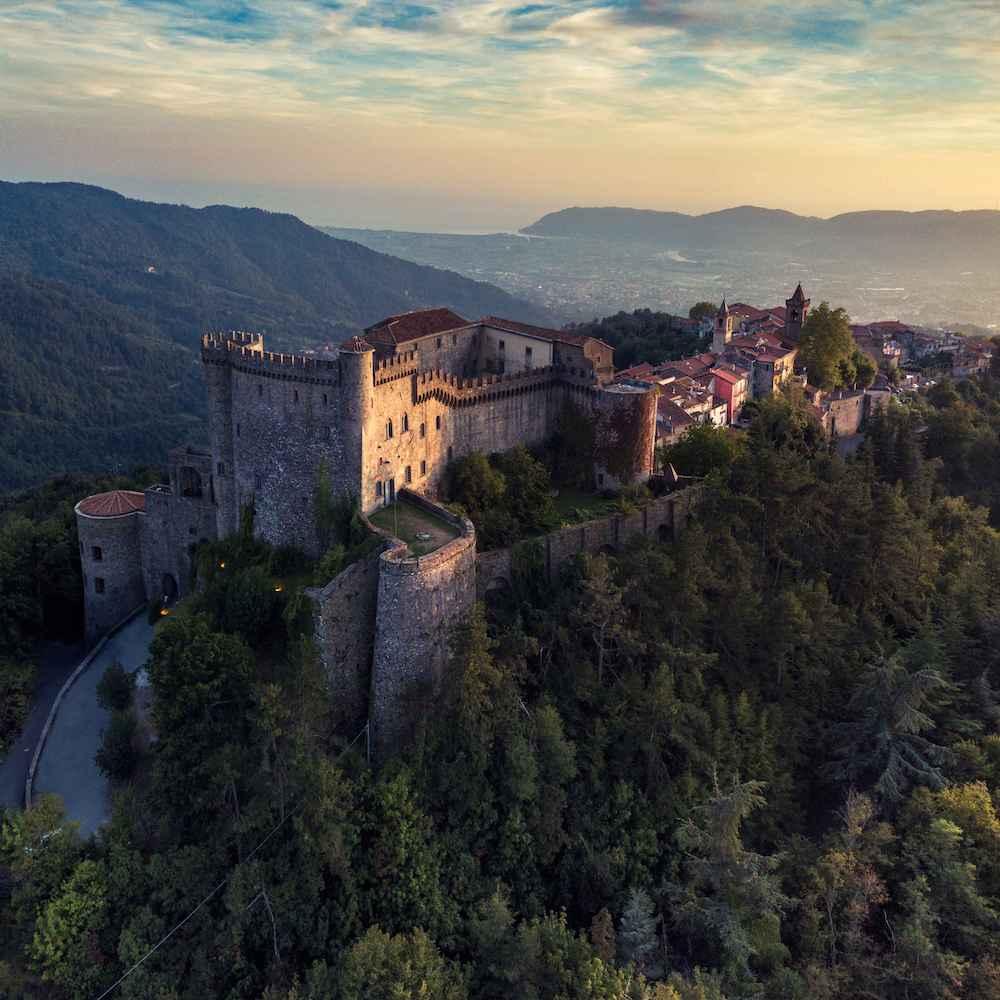
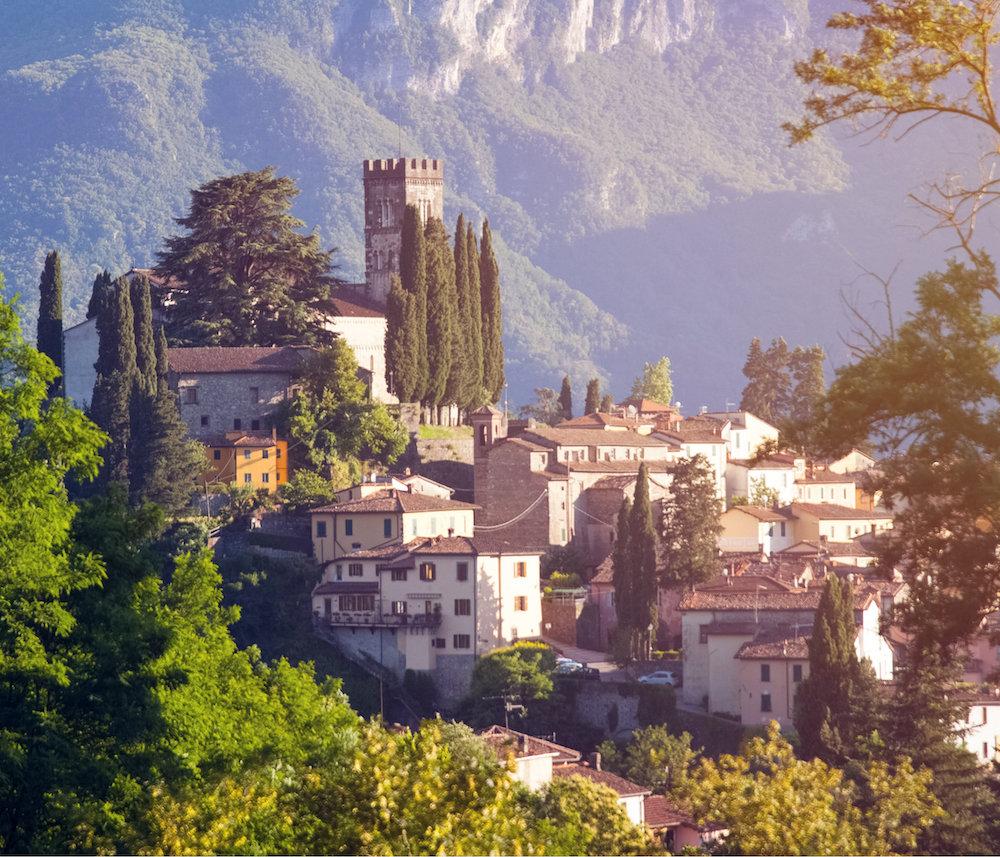
Barga - Lucca
Before arriving in Lucca, we make a stop in Barga, a town with few tourists and charming streets. After a tough climb, you can visit the Duomo on the hill and enjoy a beautiful view of the city, the Apennines, the Pizzorne mountains and the Apuan Alps. The road from Barga to Lucca takes us past the Ponte della Maddalena, also called the Devil's Bridge.
There is a lot to see in Lucca, from the Palazzo Ducale and Piazza Napoleone to the Duomo di San Martino, art treasures in the Museo della Cattedrale and the Via Fillungo, a 700 m long shopping street. Lucca's city wall has surrounded the city centre since 180 B.C. The garden on the Torre dei Guinigi is also special. 230 steps and about 45 metres high, magnificent century-old holm oaks stand atop the tower. Piazza dell' Anfiteatro is one of the liveliest squares in Lucca. This used to be the site of the amphitheatre, the shape of which is still clearly recognisable in the square. You can see it all the more clearly from a terrace, of course.
Pisa
Although Pisa is known for its leaning tower - undoubtedly the symbol of the city - there is much more to discover in this city of art. There are many museums, churches and palaces to visit, such as the Santo Stefano dei Cavalieri, designed by painter and architect Giorgio Vasari. The Duomo Santa Maria Assunta lies in the "shadow" of the tower, but it is one of the most beautiful cathedrals in Italy. Especially the harmony of columns and arches, the white and grey marble, the colourful mosaics and the magisterial appearance make the cathedral special. The beach and the Tyrrhenian Sea are not far away either.

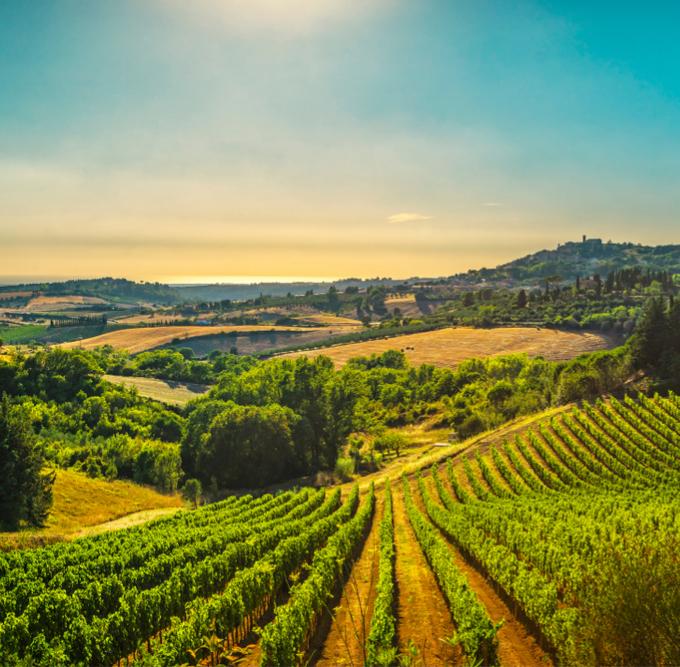
Montescudaio
Via the coast we drive further to Montescudaio. It is advisable to discover the charming village on foot. The small streets are already quite a challenge by car, let alone with the camper. It is remarkable that this village has been destroyed twice by an earthquake in the 19th century. Many old houses and the Castello di Montescudaio were destroyed. The most beautiful place is probably the Chiesa di Santa Maria Assunta. The church stands on the highest point of the village and was originally an abbey. On the square in front of the church, you can enjoy the sunshine with a breathtaking view over the valley and the Mediterranean Sea. In the surroundings, you can make beautiful walks through olive groves and vineyards.

Volterra
Volterra is an atmospheric city situated high above the Cecina valley. When you visit the city, you walk through different eras. Both the Etruscans and the Romans have left a great legacy here. The friendly atmosphere, beautiful viewpoints, cathedral, cosy squares, palaces and museums make Volterra definitely worth a stop. For example, you can admire the Teatro Romano. This Roman amphitheatre was built during the time of Emperor Augustus and could seat about 2000 people. The Fortezza Medicea can be seen from afar as you approach Volterra. The oldest part of the fortress dates from the 14th century. The second part was built by the Medici dynasty when the most powerful family in Florence gained control over Volterra. If you have had enough of old buildings, you can visit the archaeological excavations of the acropolis of the ancient Etruscan city in the Parco Archeologico. You will find the ruins of 2 Etruscan temples and traces of an underground Roman water reservoir.
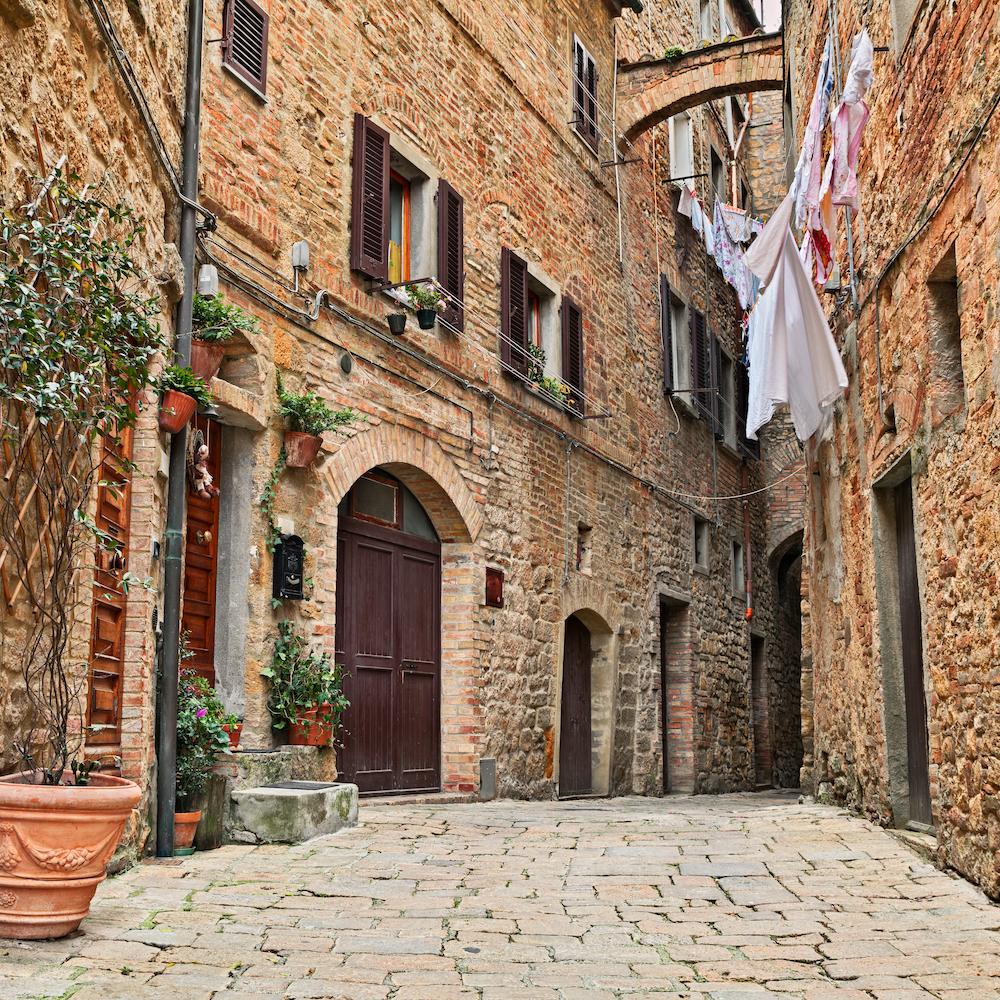

San Gimignano
To reach San Gimignano, we drive past the nature reserve of Castelvecchio in the Val d'Elsa. The reserve has a very diverse vegetation, from shady oak woods to beautiful Mediterranean scrub on the rugged limestone cliffs. At an altitude of 379 m, you can admire the impressive ruins of Castelvecchio, an important medieval fortress.
San Gimignano is also called the tower city. In the past, the rival families of the city lived in the 72 residential towers of which 14 are left today. In San Gimignano, you will find beautiful views and the best ice cream in the world! Be sure to try the white Vernaccia wine which is only produced in this region.
Siena
We arrive in Siena, the heart of Tuscany. It is one of those Italian cities where you can walk around all day without getting bored. Built on three hills, the city still has the same look as it used to have. You can wander along Gothic palaces and enjoy detailed architecture. Twice a year, the Palio delle contrade is held in Siena. The horse race is a very important event for Siena. In Siena, take your time to visit some restaurants and let yourself be spoiled by the delicious Italian cuisine. Many terraces have a beautiful view of the city. We also recommend a gelato (or two) in between meals.
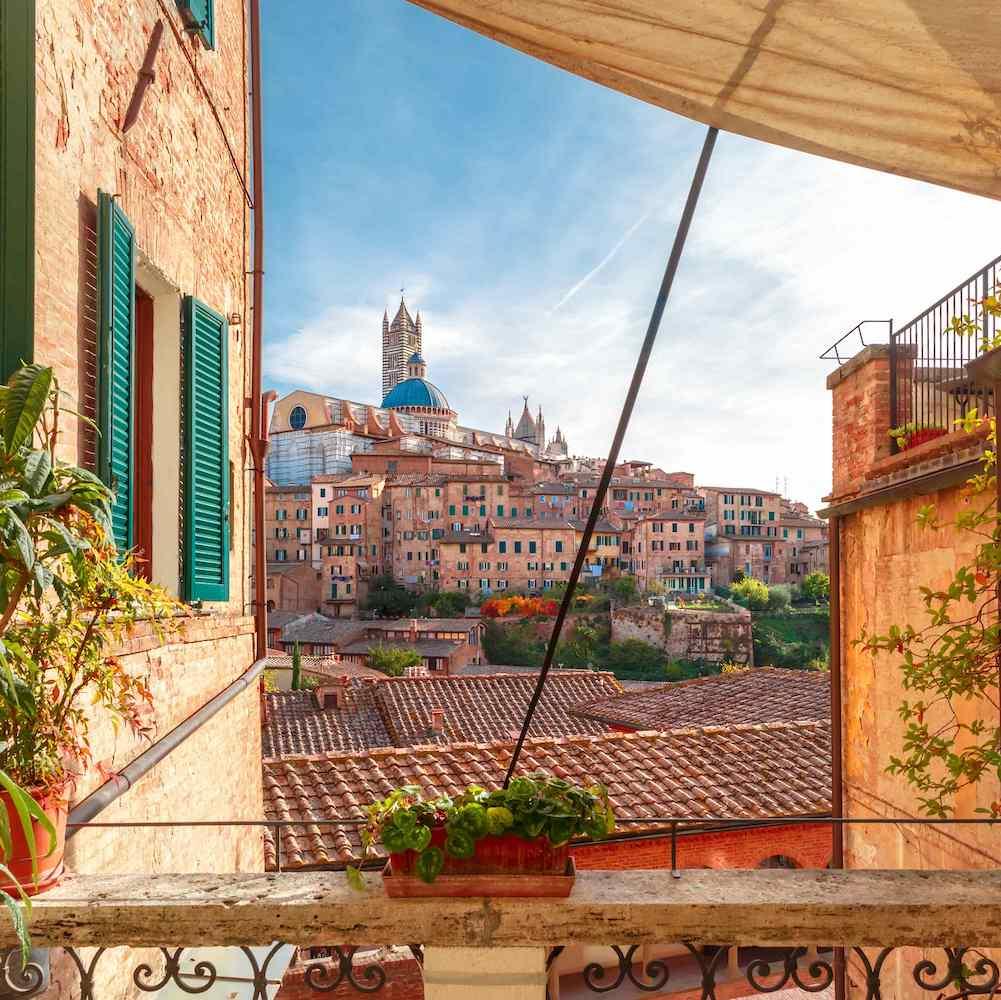
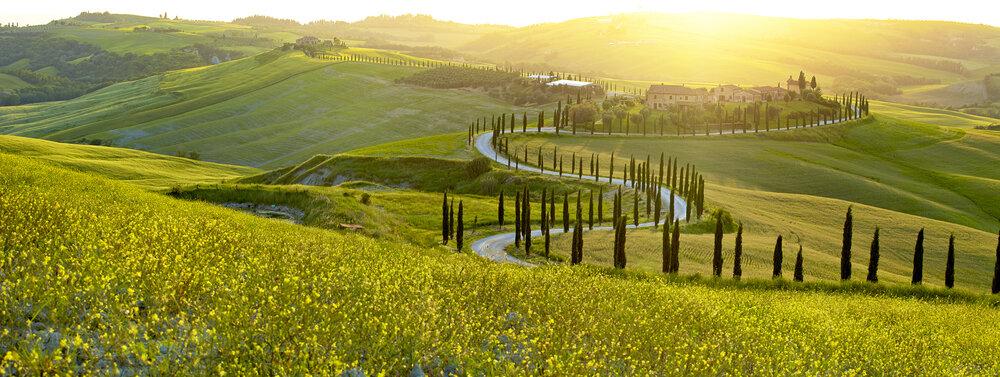
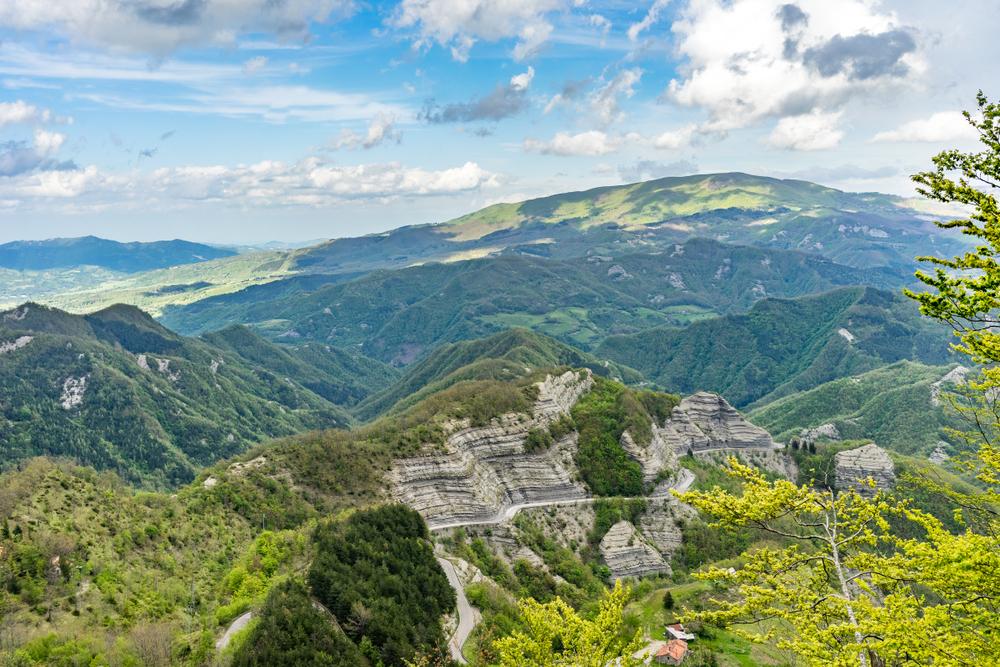
Arezzo & Foreste Casentinesi
Arezzo is, just like the previously visited cities, a beautiful authentic Tuscan town. So authentic that fans of the famous film "La Vita è Bella" by Roberto Benigni will undoubtedly recognise some of its locations. Arezzo is also the birthplace of Giorgio Vasari. He designed, among others, the Uffizi museum in Florence. In Arezzo, his house is partly furnished as a museum. Take a walk along the Piazza Grande where you will be overwhelmed by one impressive building after another.
After Arezzo, we leave Tuscany and drive through the Emilia-Romagna region to the Foreste Casentinesi National Park. Here, we leave the cities behind for a while and immerse ourselves in nature. In Foreste Casentinesi, you can make beautiful hikes and cycle tours. Afterwards, we follow the river Arno to Florence, our last stop.
Firenze
There is a lot to tell about Florence as there is a lot to see. We therefore followed our nose and let ourselves be carried through the city. Florence breathes art and beauty, but can be quite busy in the high season. Do you want to visit important buildings such as the Duomo or the Uffizi? Then it is best to book your tickets in advance. An absolute gem are the Boboli gardens behind Palazzo Pitti. The theatrical gardens were laid out in the 16th century for Eleanor of Toledo. In the gardens, you can admire various works of art such as the Grotta Grande, the amphitheatre or the Neptune fountain by Stoldo Lorenzi. Across the river Arno you will find the Ponte Vecchio. The wonderful bridge has become the symbol of the city.
We can promise you one thing for sure: you will not be bored in Florence.
